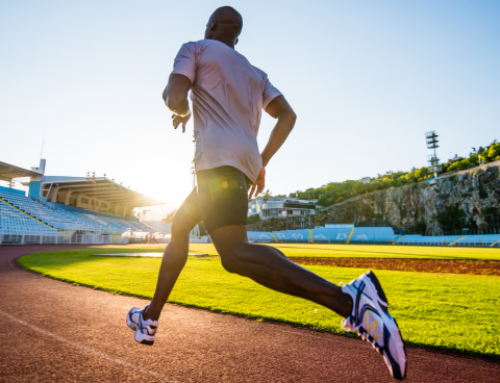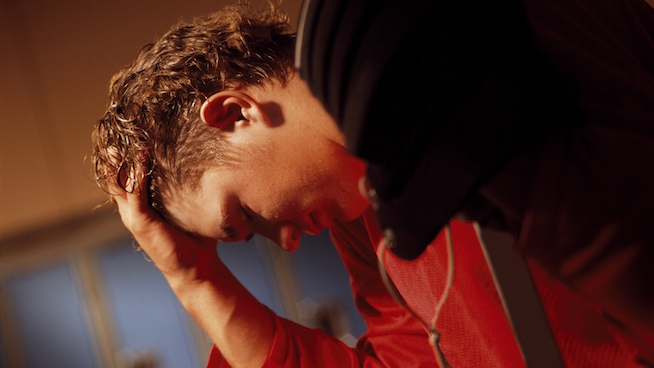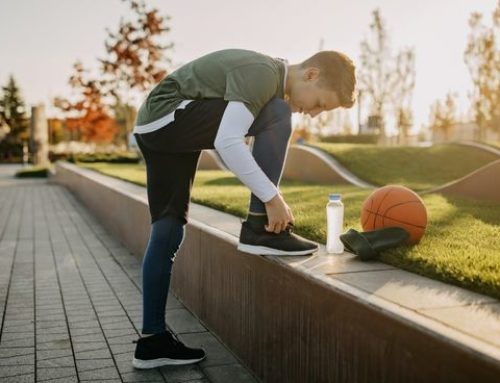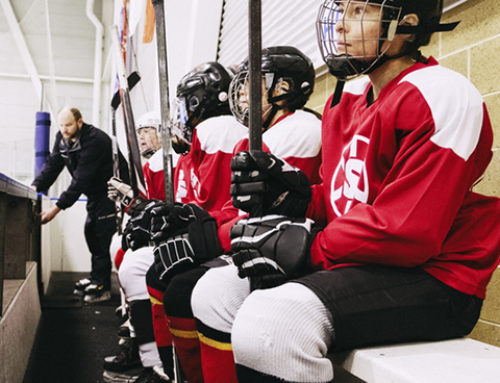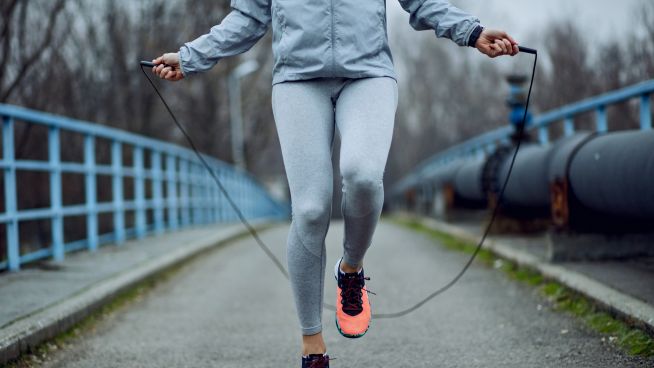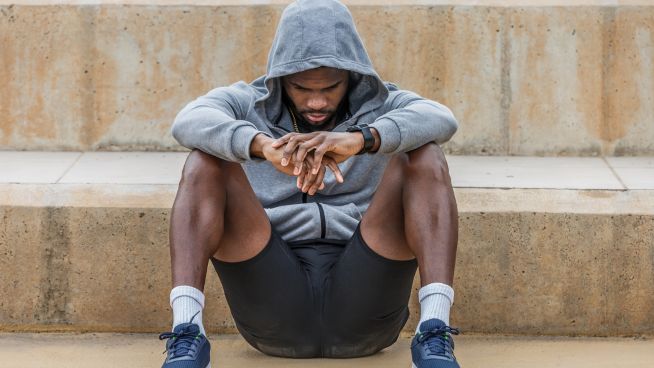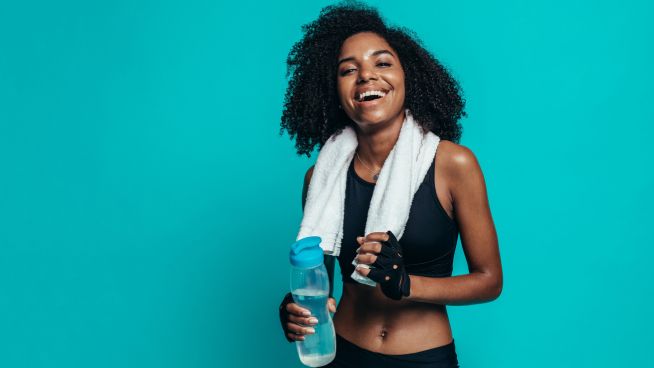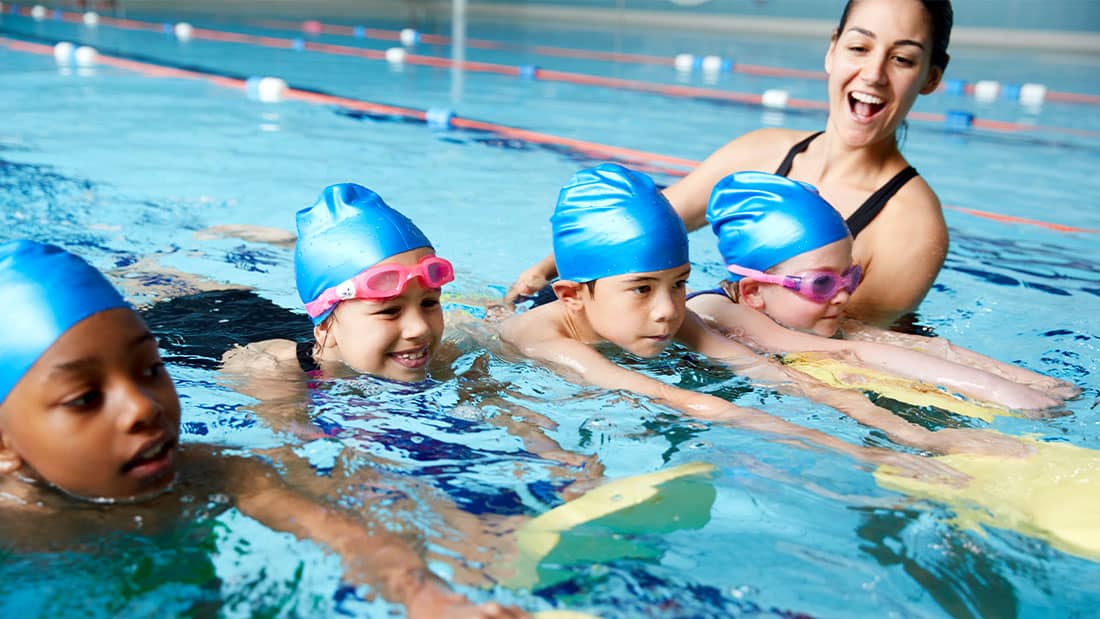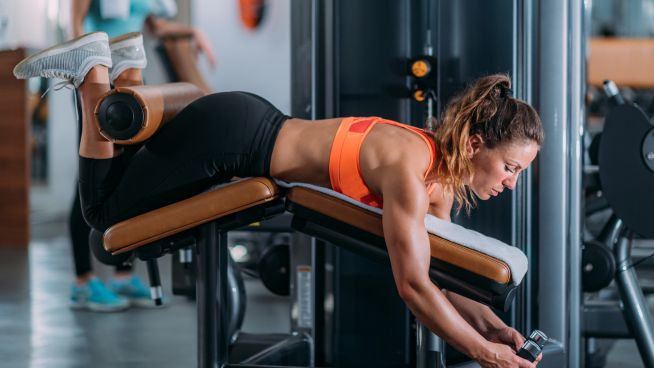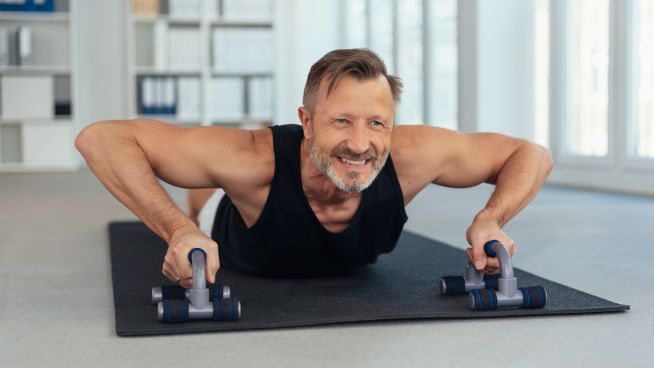5 Gymnastics Conditioning Exercises to Improve Body Mobility
Often used by elite level gymnasts but certainly not limited to them, these gymnastics conditioning exercises for mobility are incorporated into the workouts of everyday people aiming to maintain their healthy body. Gymnastics is incredibly beneficial for developing flexibility and strength with numerous exercises aimed to foster motion and joint mobility. Here are five exercises inspired by gymnastics conditioning that are perfectly acceptable to do without even leaving the house.
Heels Up
This exercise is meant to build strength in the abdominal muscles by targeting lower abs, but can also significantly develop lower-back muscles and improve posture by tightening your core.
How to do it:
Begin on your back facing upward and raise both legs. Imagine your body forming the shape of a capitol “L.”
With your arms to your sides at shoulder level making a “T” shape with your upper body, curl your hips under so you are pushing your feet toward the ceiling. Do not move any other direction than upward. Execute this movement 20 times, then give yourself a 30-second rest. Complete 3 sets.
*Note: If flexibility is lacking in extending your legs up, it is still possible to adequately perform this exercise. Just make sure your legs don’t raise higher or lower when your hips curl under.
Swimmers
Have lower back pain? Great! Well, not so great, but this exercise is perfect for developing strength in uneven muscles that could be the cause of your uncomfortable sensation. You may also feel pain in other parts of your body like the hip or shoulder because of the uneven muscle growth.
How to do it:
Lie flat with your belly on the floor and arms in close proximity to your ears while your legs are extended and close to one another. Have your chin resting on the floor in such a way so your nose is pointed straight ahead with neck muscles relaxed. Raise your right arm but keep it from moving outward, while simultaneously raising your left leg (again, don’t raise it outward). Maintain straight limbs during this exercise. Keep both limbs in the air for 3 seconds then lower them to a resting position for 1 second. Now with your left arm and right leg, perform the same movements. This completes 1 repetition. Execute 20 repetitions then rest for 1 minute (completes 1 set). Perform 3 sets.
Balancing Act
With all the various apparatuses in this sport, like gymnastics bars, there is a high risk of injury while performing any skills on them. But similar to other sports, one of the most common injuries experienced by gymnasts is a rolled ankle, incredibly tedious and absolutely necessary to let heal. Luckily, Balancing Act is a simple and effective exercise that builds the muscles needed to help stabilize such an injury. To do this exercise a pillow, cushion or folded towel is needed to stand on. For this example we will be using a pillow.
How to do it:
Stand on top of the pillow with your right foot and have your left foot flush against your right leg with your left leg bent. We are trying to directly target the ankle, so it is very important to keep whichever leg your are balancing on completely straight. So if our right leg is bent, that knee will be receiving the bulk of the work instead of the ankle. Maintain this balanced position for 30 seconds, then switch legs so that you are using your left leg to balance instead. This will complete 1 set. Perform 3 sets.
For more effective results try doing this after waking up and before going to bed.
It is important to note that if you have weak ankles, try performing this near a wall to brace yourself while balancing.
If you have stronger ankles and this all seems relatively easy, do it with your eyes shut. Removing eyesight makes the whole exercise noticeably more difficult and you should feel more effort to keep yourself balanced coming from your ankle.
Arm Dips, but Up with the Hips
Dips are one of the most common ways to work out the triceps. This variation of Dips is slightly different from the traditional way of doing them but can have incredibly effective results when done correctly. This will also target core muscles in your abdomen and back.
How to do it:
Grab an object (like a coffee table, bench, couch, etc.) that is between your ankle and knee in height.
Start with your back against the object you are using in this exercise and rest your hands on the edge of it. Extend your legs out in front of you and squeeze your butt to hold up your hips so your whole body is straight from your feet to your shoulders. The key to this mobility exercise is to keep your bottom from dropping to the floor and maintain a straight line with your body.
Bend your arms while keeping shoulders over both hands. A good indication that you are doing it wrong is if your chest starts to sink forward, so try not to let your hips drop. If you are familiar with traditional Dips you’ll notice this version is more difficult so go slowly and keep the repetitions at a number that best suits your skill level (as low as 8 reps). Arms should only bend until your hips start to drop.
Stationary Flying
This exercise works back muscles while improving shoulder mobility. This is a great source for mobility development in the shoulders due to the relation of strength and flexibility to range of motion. There isn’t much pressure exerted on hands, elbows or shoulders so it is low-impact and can be performed by trained athletes and anyone recovering from an injury. It is as much as a conditioning exercise as a rehabilitative one.
How to do it:
To perform stationary flying, lie on your stomach on the floor with both of your arms out to the side even with your shoulders making a T shape. It is better for your arms to be above your shoulders rather than below, so before performing any repetitions, slide your hands a few inches upward, bringing your biceps ever so slightly closer to your ears.
Just like in the “Swimmers” exercise, rest your chin on the ground with your nose pointed forward while having your legs together and extended to maintain a perfect alignment.
Raise your hands, forearms, and upper arms from the ground. Hold for 2-5 seconds then return back to the resting position. Repeat this hold 15 times then 5 more times without holding. The remaining 5 reps will be done consecutively and that will complete 1 set. Do 3 sets and rest for one minute between each one.
Concluding Thoughts
It’s important to do these exercises regardless of where you are; starting is always half the battle. Be patient and try not to push yourself or let yourself get frustrated for not doing it correctly the first time. Gradually, you will see improvement in strength, targeted muscles and overall mobility. You can find more fitness and health inspired gymnastics information on our website!
READ MORE:
[cf]skyword_tracking_tag[/cf]RECOMMENDED FOR YOU
MOST POPULAR
5 Gymnastics Conditioning Exercises to Improve Body Mobility
Often used by elite level gymnasts but certainly not limited to them, these gymnastics conditioning exercises for mobility are incorporated into the workouts of everyday people aiming to maintain their healthy body. Gymnastics is incredibly beneficial for developing flexibility and strength with numerous exercises aimed to foster motion and joint mobility. Here are five exercises inspired by gymnastics conditioning that are perfectly acceptable to do without even leaving the house.
Heels Up
This exercise is meant to build strength in the abdominal muscles by targeting lower abs, but can also significantly develop lower-back muscles and improve posture by tightening your core.
How to do it:
Begin on your back facing upward and raise both legs. Imagine your body forming the shape of a capitol “L.”
With your arms to your sides at shoulder level making a “T” shape with your upper body, curl your hips under so you are pushing your feet toward the ceiling. Do not move any other direction than upward. Execute this movement 20 times, then give yourself a 30-second rest. Complete 3 sets.
*Note: If flexibility is lacking in extending your legs up, it is still possible to adequately perform this exercise. Just make sure your legs don’t raise higher or lower when your hips curl under.
Swimmers
Have lower back pain? Great! Well, not so great, but this exercise is perfect for developing strength in uneven muscles that could be the cause of your uncomfortable sensation. You may also feel pain in other parts of your body like the hip or shoulder because of the uneven muscle growth.
How to do it:
Lie flat with your belly on the floor and arms in close proximity to your ears while your legs are extended and close to one another. Have your chin resting on the floor in such a way so your nose is pointed straight ahead with neck muscles relaxed. Raise your right arm but keep it from moving outward, while simultaneously raising your left leg (again, don’t raise it outward). Maintain straight limbs during this exercise. Keep both limbs in the air for 3 seconds then lower them to a resting position for 1 second. Now with your left arm and right leg, perform the same movements. This completes 1 repetition. Execute 20 repetitions then rest for 1 minute (completes 1 set). Perform 3 sets.
Balancing Act
With all the various apparatuses in this sport, like gymnastics bars, there is a high risk of injury while performing any skills on them. But similar to other sports, one of the most common injuries experienced by gymnasts is a rolled ankle, incredibly tedious and absolutely necessary to let heal. Luckily, Balancing Act is a simple and effective exercise that builds the muscles needed to help stabilize such an injury. To do this exercise a pillow, cushion or folded towel is needed to stand on. For this example we will be using a pillow.
How to do it:
Stand on top of the pillow with your right foot and have your left foot flush against your right leg with your left leg bent. We are trying to directly target the ankle, so it is very important to keep whichever leg your are balancing on completely straight. So if our right leg is bent, that knee will be receiving the bulk of the work instead of the ankle. Maintain this balanced position for 30 seconds, then switch legs so that you are using your left leg to balance instead. This will complete 1 set. Perform 3 sets.
For more effective results try doing this after waking up and before going to bed.
It is important to note that if you have weak ankles, try performing this near a wall to brace yourself while balancing.
If you have stronger ankles and this all seems relatively easy, do it with your eyes shut. Removing eyesight makes the whole exercise noticeably more difficult and you should feel more effort to keep yourself balanced coming from your ankle.
Arm Dips, but Up with the Hips
Dips are one of the most common ways to work out the triceps. This variation of Dips is slightly different from the traditional way of doing them but can have incredibly effective results when done correctly. This will also target core muscles in your abdomen and back.
How to do it:
Grab an object (like a coffee table, bench, couch, etc.) that is between your ankle and knee in height.
Start with your back against the object you are using in this exercise and rest your hands on the edge of it. Extend your legs out in front of you and squeeze your butt to hold up your hips so your whole body is straight from your feet to your shoulders. The key to this mobility exercise is to keep your bottom from dropping to the floor and maintain a straight line with your body.
Bend your arms while keeping shoulders over both hands. A good indication that you are doing it wrong is if your chest starts to sink forward, so try not to let your hips drop. If you are familiar with traditional Dips you’ll notice this version is more difficult so go slowly and keep the repetitions at a number that best suits your skill level (as low as 8 reps). Arms should only bend until your hips start to drop.
Stationary Flying
This exercise works back muscles while improving shoulder mobility. This is a great source for mobility development in the shoulders due to the relation of strength and flexibility to range of motion. There isn’t much pressure exerted on hands, elbows or shoulders so it is low-impact and can be performed by trained athletes and anyone recovering from an injury. It is as much as a conditioning exercise as a rehabilitative one.
How to do it:
To perform stationary flying, lie on your stomach on the floor with both of your arms out to the side even with your shoulders making a T shape. It is better for your arms to be above your shoulders rather than below, so before performing any repetitions, slide your hands a few inches upward, bringing your biceps ever so slightly closer to your ears.
Just like in the “Swimmers” exercise, rest your chin on the ground with your nose pointed forward while having your legs together and extended to maintain a perfect alignment.
Raise your hands, forearms, and upper arms from the ground. Hold for 2-5 seconds then return back to the resting position. Repeat this hold 15 times then 5 more times without holding. The remaining 5 reps will be done consecutively and that will complete 1 set. Do 3 sets and rest for one minute between each one.
Concluding Thoughts
It’s important to do these exercises regardless of where you are; starting is always half the battle. Be patient and try not to push yourself or let yourself get frustrated for not doing it correctly the first time. Gradually, you will see improvement in strength, targeted muscles and overall mobility. You can find more fitness and health inspired gymnastics information on our website!
READ MORE:
[cf]skyword_tracking_tag[/cf]

